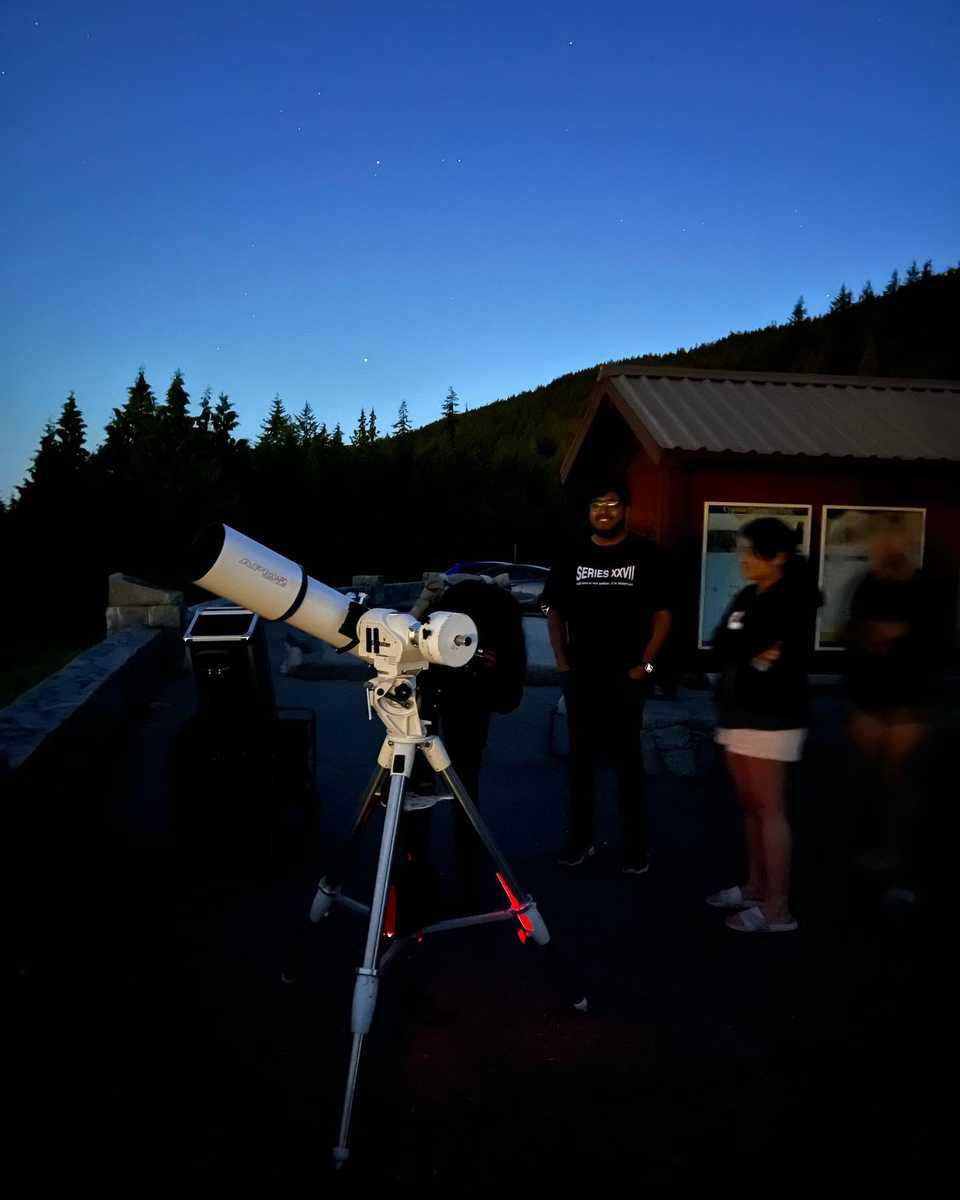Grand Planetary Conjunction at the Cypress Lookout
After an incredibly productive night hunting more galaxies, nebulae, and open and globular clusters than I could count, Kamryn and I packed up from Porteau Cove campsite at around 2:30 am, and said goodbye to Jeff (thanks again for having us!), and drove to the Cypress Lookout.
While on the drive, we chatted about all of the deep-sky objects we viewed; Kamyrn and I both agreed that the view of the great Hercules globular cluster M13 through Jeff’s 12” Dob and binoviewers was the highlight of the night, along with the double cluster in Perseus. I also was awed by the Veil Nebula through both the refactor and Dob. The details in the wispy supernova remnant looked akin to low-hanging fog over a lake on a crisp morning.
When we arrived at the lookout, I decided to just set up just the AZ-EQ6 with the UBC Astronomy Club’s brand new APM 140 apochromatic doublet, an absolute beast of a refractor with a dew shield I could fit a cat in. After a great first light out with the scope at Porteau Cove, I was eager to see what it could do on the planets. I was too tired to even consider setting up my Takahashi FC-100DZ alongside.

Kamryn had never seen the planets through a telescope before, and I had her do the first alignment on Jupiter using my iPad. Once that was done (and I knew it was done when I heard an excited, “I can see the moons!”) I aligned the scope next on Saturn, then swapped the 17.3mm Delos for the 3.5mm Pentax XW, and was delighted and relieved by the reasonable seeing conditions at 280x. The banding on Saturn was plainly evident, and Cassini’s division was easily discerned. The moons Titan, Rhea, and Enceladus were visible around the planet.
“It doesn’t even look real!” she said.

We then invited a couple of people who were there hanging out at the lookout at 3:30 am. I asked them if they were there to view the planetary conjunction, but they looked confused. “Those are planets? ” one asked, gesturing to Jupiter and Mars. “We thought they were stars.”
Saturn understandably dazzled them with its beauty, and after sufficient squeals of delight, I slewed the scope to Jupiter and swapped to the 5mm Pentax XW, which framed the 4 Galilean moons perfectly at 196x. The colours and the bands of Jupiter immediately caught my eye; although the Great Red Spot wasn’t visible, I could see at least 4 distinct bands, plus variations in the colour of the solar system’s largest planet, a view I could happily stare at for hours.

A bunch more people started to arrive before 4 am, including my girlfriend Maria, who arrived back from Toronto late last night and still made it out (yay!), and some of my friends who were crazy enough to wake up in time. Devin from the UBC Astro Club also joined us, having spent the night observing further up the Cypress bowl road.
I can’t stress how great the AZ-EQ6 mount is for these outreach events; having to constantly readjust my scope at high powers with a manual mount is annoying, and with this mount, the planets remain centered even at close to 300x for long periods. It’s also extremely quiet, nearly silent while slewing, making it easy to observe in contemplative silence. Amateur astronomy is first and foremost an ascetic activity, and these things make a difference in the experience of it all.

All in all, ~25 people or so viewed Mars, Jupiter and Saturn through the APM 140. Saturn was the crowd favourite, as it always is, although I felt that Jupiter looked likewise fantastic. Mars still was pretty small - it’s mind-bending to think that Jupiter and Saturn look so large, even though Mars is far closer to Earth.
Compared to the morning prior, the views through the APM 140 were sharper, with more detail, than my Takahashi. The improved seeing no doubt contributed. I do think that the colours of the planets, especially Jupiter, on my Tak looked cleaner; perhaps the fluorite element is pulling ahead in terms of light scatter compared to the FPL-53 glass of the APM. I also did notice light scatter around Jupiter in the APM, although I’m not sure if it was the haze in the atmosphere or perhaps the diagonal that is causing it. I’ll have to investigate in future observations. I have a feeling that the Tak will hold its own against the APM on all but the nights of the best seeing conditions. Regardless, both are dream scopes and I’d be happy to observe with either.